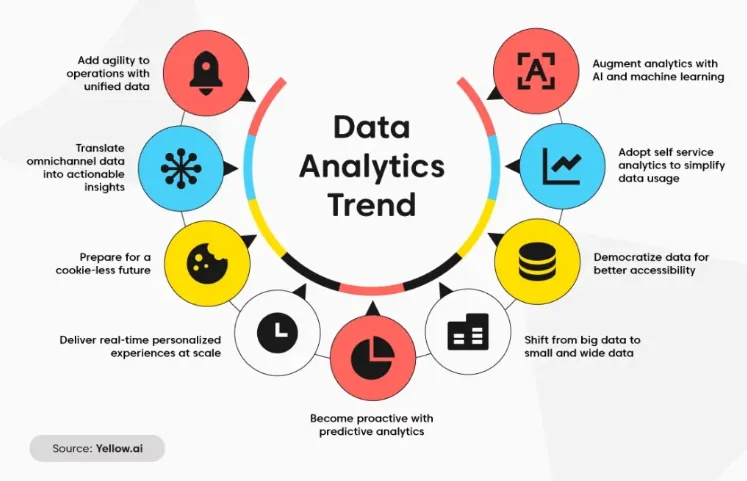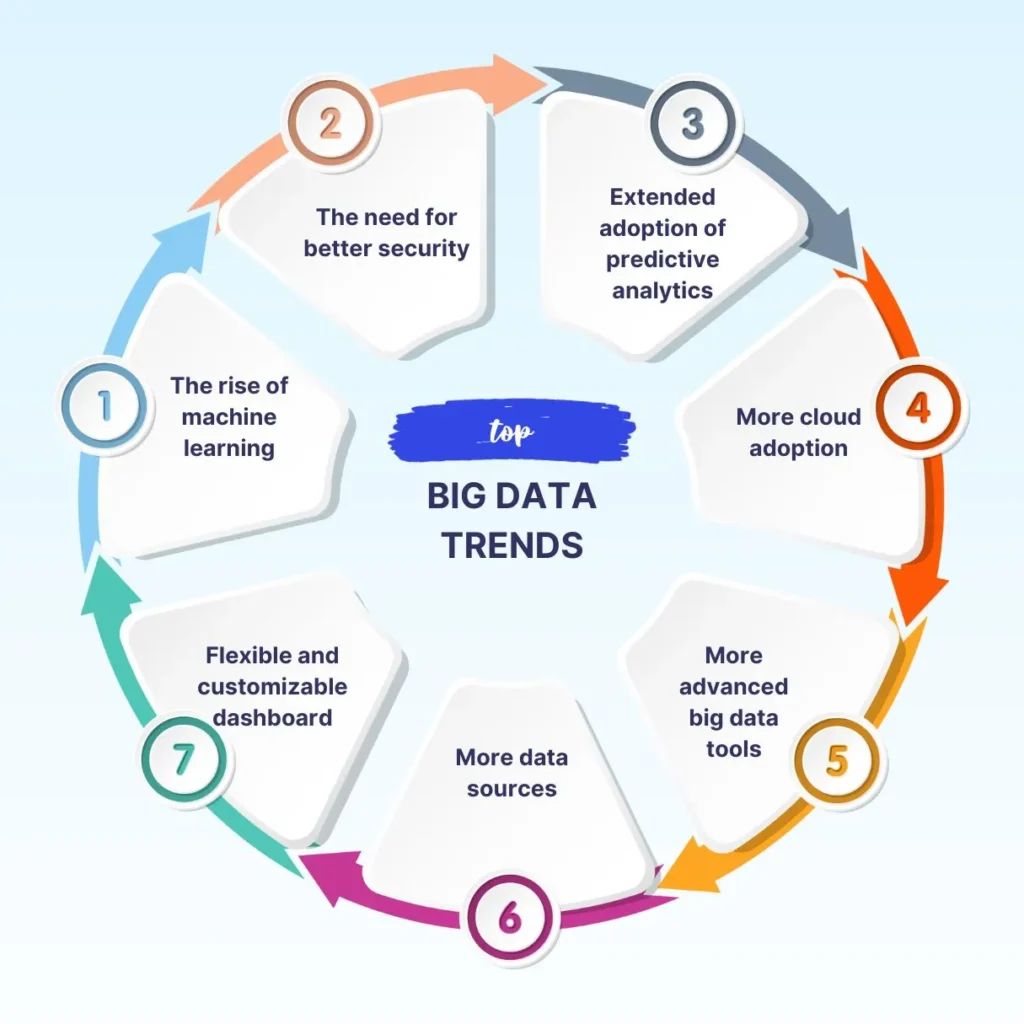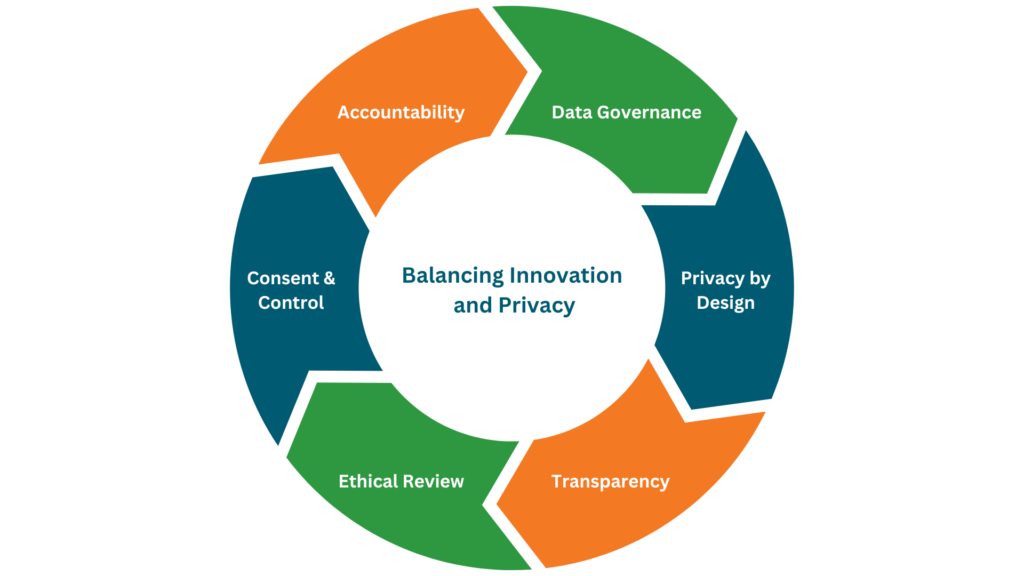
Unlocking Data Analytics Trends in 2024 and Beyond
With a market projected to reach $665.7 billion by 2033, the future trajectory of data analytics trends are intriguing, vast, and promising. CTOs looking to future-proof their business in 2024 and beyond need to embrace a robust data analytics framework to make smarter, more strategic decisions, enhance operational efficiency, improve security, foster innovation, and ultimately drive business success. To chart the evolution of data analytics driven by the introduction of new developments and innovations, let’s take a moment to dive into some major data analytics tends in 2024 and beyond.

The current landscape of data analytics heading into 2024
The importance of data governance will grow significantly in 2024, evolving beyond its traditional focus on data access and security. Organizations will need to implement robust frameworks that not only safeguard data but also enhance market integrity and economic performance. Updating policies to ensure responsible data usage—aligned with both legal requirements and ethical standards—will be crucial for businesses looking to maintain trust and compliance in an increasingly regulated environment.

Data fabric architecture is gaining traction as a means to unify and streamline data access and management across an organization. By 2024, data fabric deployments are expected to quadruple data utilization efficiency while halving human-driven management tasks. This approach will also support the growing trend of data democratization, allowing for more accessible, self-service data tools that enable teams to harness insights independently.
Top data analytics trends for 2024

AI-driven analytics
Get ready for the data revolution. In 2024 and beyond, AI is about to kick data analytics up a notch. In the future, AI will step in, transforming data analytics from a daunting task into a strategic asset. With the integration of AI, data analytics will be faster, more scalable, and cost-effective. AI-powered algorithms will scan vast amounts of data, identify patterns, and make incredible predictions. From intelligent virtual assistants to chatbots, AI is bound to make data analytics more efficient and insightful.
Augmented analytics, powered by AI and machine learning, is set to elevate how businesses handle their data. In 2024, this trend will automate tasks like data preparation, cleansing, and integration—freeing up data professionals to focus on deeper, strategic analysis. By streamlining workflows and minimizing human error, augmented analytics will empower organizations to extract more meaningful, actionable insights from their data, helping them stay ahead in a data-driven world.
As we move into 2024, edge computing is set to play a pivotal role in transforming data analytics. This distributed computing model processes data closer to where it is collected, rather than relying on centralized servers or cloud systems. With the increasing demand for real-time insights, especially in industries where immediate data processing is critical, edge computing will enable faster response times, more accurate decision-making, cost reductions, and continuous operations.
Natural language processing
Natural language processing (NLP) is a technology that gives computers the ability to interpret, manipulate, and comprehend human language.
Traditional NLP focused mainly on text data. However, recent advancements have expanded NLP to process and understand multimodal data, such as text, images, videos, and speech. This allows machines to better comprehend human communication by considering additional contextual information beyond text.
Multimodal NLP is a growing field of study and is expected to become increasingly significant in 2024 and beyond as more data becomes available across multiple modalities.
Key ethical points in data science and analytics trends

The rise of data democratization
As data democratization grows, more individuals within organizations have direct access to data tools and insights, empowering decision-makers across all levels. However, this trend raises ethical questions about data stewardship, accuracy, and interpretation. Ensuring that individuals use data responsibly and are properly trained to avoid misinterpretation or bias is critical. Ethical frameworks must be in place to prevent misuse and maintain data integrity while fostering an inclusive, data-driven culture.
Subscribe to our bi-weekly newsletter
Get the latest trends, insights, and strategies delivered straight to your inbox.
Ethical AI and data privacy
The widespread adoption of AI in data analytics presents both opportunities and challenges. AI-driven systems can process vast amounts of data efficiently, but they also carry the risk of reinforcing biases and infringing on personal privacy. As data privacy regulations become stricter, ethical AI practices must focus on transparency, fairness, and accountability. Organizations need to ensure that AI models respect privacy rights, comply with legal standards such as GDPR, and avoid using data in ways that could harm or discriminate against individuals.
Sustainability and Data Analytics
Sustainability is becoming a core consideration in data analytics. The environmental impact of large-scale data processing, storage, and cloud computing—often requiring significant energy consumption—raises ethical concerns. Organizations are increasingly tasked with adopting “green” data strategies, optimizing resource usage, and minimizing electronic waste. Leveraging sustainable data practices not only aligns with corporate responsibility but also promotes a long-term ethical commitment to reducing the environmental footprint of data science and analytics.
Preparing for the future of data analytics
As stewards of technology within organizations, CTOs need to make use of data analytics tools and techniques to drive business growth. By implementing data analytic strategies, CTOs can empower their organizations to make data-driven decisions, enhance customer experiences, streamline operations, and anticipate future market trends.

As CTOs embrace data analytics, they must also ensure adequate data privacy and security measures are in place to protect sensitive information. With the right balance of technology, strategy, and security, CTOs can unlock the full potential of data analytics to drive their organizations towards continued growth and success.
In brief
The future of data analytics is bright, as a result CTOS must leverage its power to drive business growth and innovation. Moreover, by staying updated with the latest trends and technologies, CTOs can ensure that their organization remains competitive in today’s data-driven business landscape.